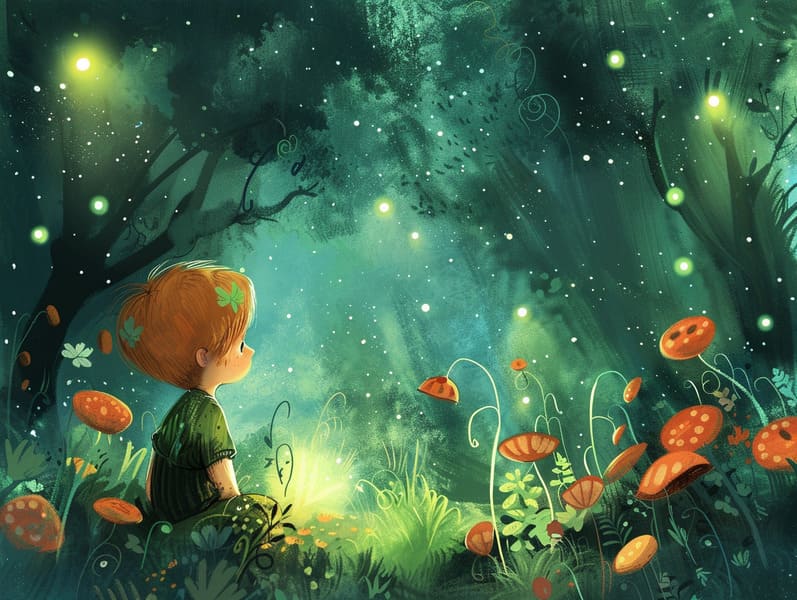The Birth of Classic Fairy Tales and Its Enduring Beauty.
The Birth of Classic Fairy Tales and Its Enduring Beauty.
Blog Article

Children's fairy tales have ancient roots. These tales have been spoken from one generation to the next well before they were ever inscribed. They emerged from a variety of civilizations, including Eastern traditions. They were initially narrated among adults, often carrying themes and messages related to the societal norms and beliefs of the time.
The renowned Brothers Grimm, Jacob and Wilhelm Grimm, were among the first to collect and release many of these beloved tales. Their compilation, "Grimm's Fables," included classics like "The True Bride," "The Story of Hansel and Gretel," and "Schneewittchen," which have since become hallmarks in the world of iconic fairy tales. Similarly, Andersen's enchanting stories, such as "The Mermaid's Tale," and "The Story of the Ugly Duckling," have won hearts worldwide, cementing their place in the pantheon of treasured fairy tales.
Even though they are old, these tales remain as applicable as ever, especially as children's night stories. These charming stories are now available in various formats, including colorful picture books, delightful animations, and digital fairy tales.
Their unwavering allure can be credited to several whimsical characteristics:
Valuable Lessons: Classic fairy tales often convey important moral lessons. Fairy tales like "The Shepherd Boy and the Wolf" teach the value of truth, while "The Hare and the Tortoise" illustrate the traits of steadfastness and modesty. These narratives offer little ones clear distinctions between virtue and vice, guiding their moral compass in a gentle yet profound way.
Empathy and Understanding: Classic fairy tales frequently involve protagonists facing problems and hurdles, encouraging listeners to resonate with their struggles and rally behind their triumphs. For instance, "The Story of Beauty and the Beast" teaches us the virtue of looking deeper to comprehend the inner being of a individual, enhancing insight and appreciation.
Cultural Awareness: Many fairy tales are infused with the cultural contexts from which they came. Learning from these fairy tales can provide illuminating insights into different traditions, strengthening a sense of global respect and comprehension.
Fantasy and Imagination: The whimsical elements in classic fairy tales—magical kingdoms—generate children’s imaginative ideas. These narratives guide readers to enchanted realms, generating inventive thinking and a sense of wonder that persists a lifetime.
Timeless fairy tales are not only charming but also informative. They function as bewitching tools in strengthening various cognitive and affective skills in young ones. When classic fairy tales are read aloud, they boost here language skills by presenting new phrases and complicated sentence structures. This practice also strengthens listening skills and concentration, as young readers keep up with the story, enthusiastic to see what happens next.
Furthermore, analyzing the themes and characters of timeless fairy tales can improve critical thinking and intellectual skills. Kids learn to discover patterns, guess what will happen, and make sense of cause and effect. These examinations also assist young ones reveal their thoughts and feelings, strengthening their emotional intelligence.
In today’s cyber age, the availability of digital storybooks has made these narratives more reachable than ever. Websites and applications offer comprehensive collections of ancient fairy tales that can be explored or listened via anytime, anywhere. Fairy tales read out loud are particularly prevalent, giving an charming way for the young to take part in these charming tales. Spoken stories and read-aloud videos lead characters and settings to life, often supported by captivating sound effects and instrumentals that enrich the narrative adventure.
The timeless appeal of timeless fairy tales lies in their ability to shift to today's world while keeping their essential themes. Contemporary updates of these stories often show more multicultural characters and modern settings, making them meaningful to today’s audience. However, the underlying themes of courage, warmth, and justice remain unchanged, continuing to affect kids of all ages.
Classic fairy tales also offer a sense of warmth and knownness. They present a systematic narrative with a plain beginning, middle, and end, often coming to a close with the closure of conflicts and the triumph of morality over wickedness. This dependability can be solacing for young ones, extending a sense of consistency in an unstable world.
Old fairy tales continue to spellbind and inform new generations, maintaining their appeal and value in modern society. As nighttime stories for kids, they feature a perfect blend of allure and teaching, boosting moral values, empathy, and creativity. The availability of web-based fairy tales and the well-liked nature of fairy tales read aloud make sure that these old narratives remain attainable to new generations.
By maintaining and spreading these stories, we continue to praise the rich tapestry of creativity and cultural heritage. Whether you are browsing a vividly illustrated book, browsing a internet collection, or listening via an sound book, the appeal of bedtime fairy tales is always within reach. These narratives teach us of the endless spell of stories and its ability to bond us across epochs and places.
Regardless if you are enjoying a vibrantly illustrated book, exploring a internet library, or listening via an voice book, the elegance of Grimm's fairy tales is always within reach.
These narratives show us of the ageless influence of fairy tales and its ability to unify us across epochs and places, establishing a link that fascinates and enlightens alike.